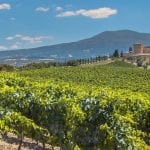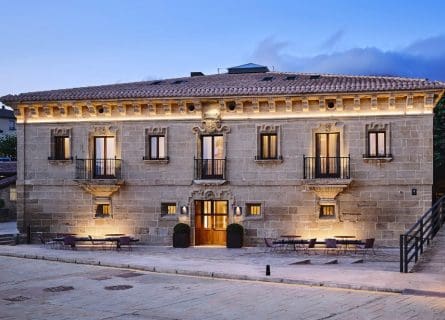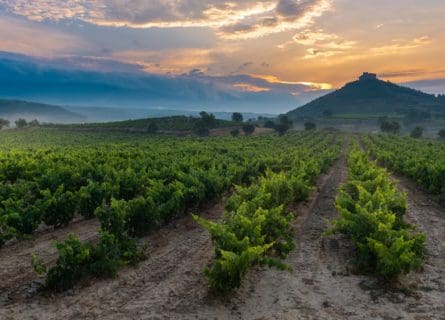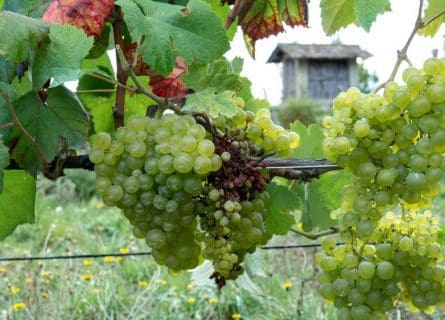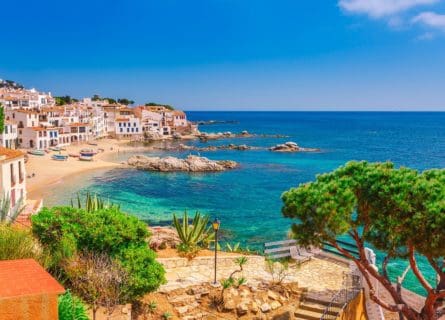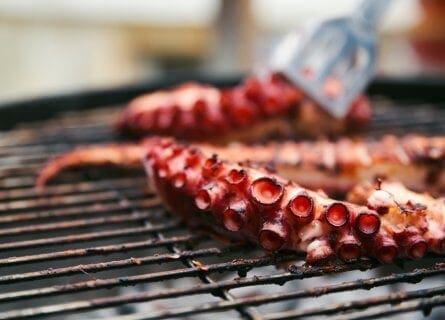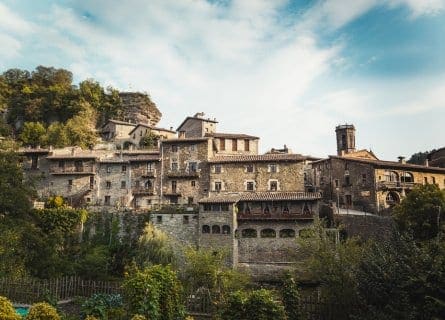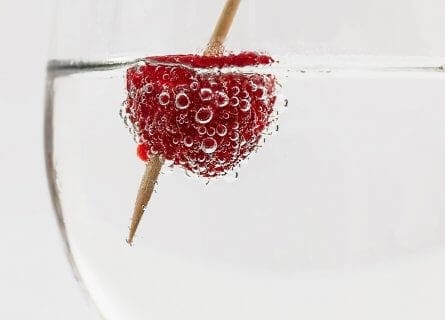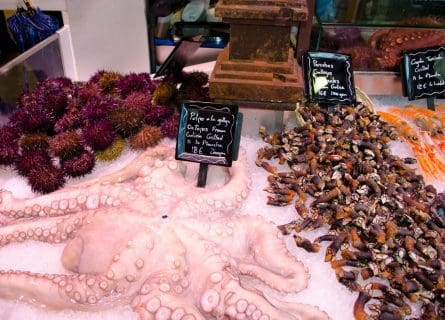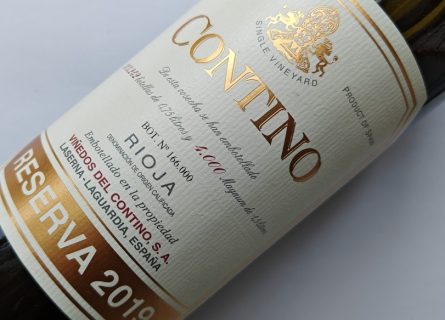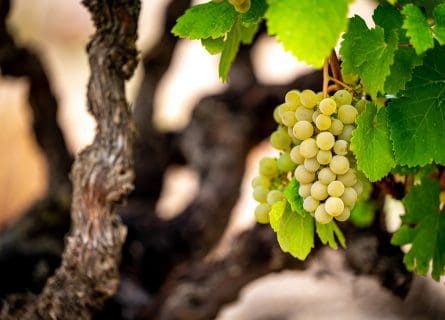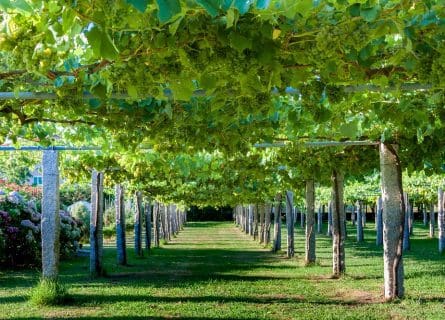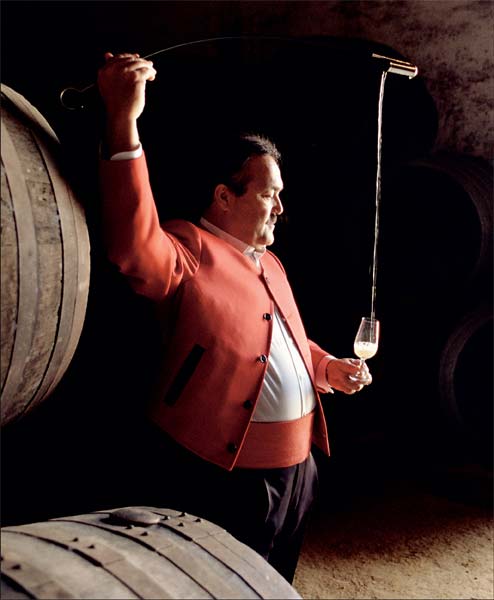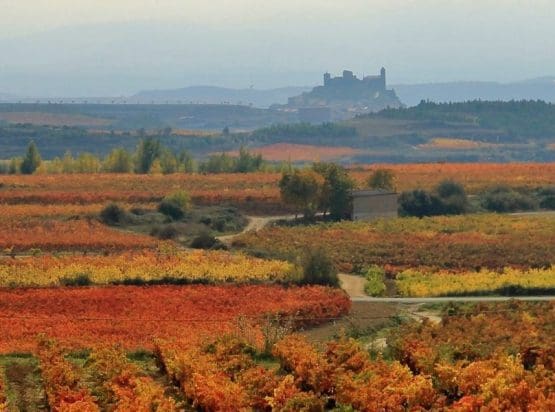
Briones Travel Guide
Sip, savor, and stroll through Briones, La Rioja's hidden wine gem - your ultimate travel guide
Briones is a small, very picturesque medieval hilltop town in the Rioja wine region, and indeed one of its hidden treasures. It has one of the most vibrant cultural heritages in La Rioja. Not only do some of the best and most long-lived wines emanate from this sub-zone, but it also offers beautiful scenery and a strong culinary tradition. And perfectly intact medieval architecture, a wealth of culture, and numerous boisterous festivals (fiestas) keep you celebrating all night. In addition, it is the only town in the region to be located on the right bank of the River Ebro. This privilege offers visitors unrivaled panoramic views of the spectacular River Ebro Valley and the surrounding vineyards.
Briones is located in La Rioja Alta, one of the three Rioja subzones (along with Rioja Oriental and Rioja Alavesa) that have constituted this ancient wine appellation for centuries. La Rioja has a history of vine cultivation stretching over a thousand years; the wines from this region are included in Spain’s oldest Denominación de Origen (appellation). The settlement was founded in approximately the 2nd century BC when the Romans conquered Spain. Legend says that Briones got its name from the region’s original settlers, the Berones, who were Bronze Age nomads that occupied these lands long before the Roman army arrived.
As the Roman civilization and its control of Western Europe collapsed in the 5th century AD due to the Visigoth and other tribes’ attacks, so did their military presence in the Iberian Peninsula. The first visitors to the Rioja region were the Vandals from modern-day East Germany, who were soon overthrown by the Germanic Visigoths. Officially, they ruled ‘Hispania’ as a territory under the Roman Emperor’s stewardship, although the Visigoths organized formal control and day-to-day administration. During this time, the Visigoth capital was Toledo, and they kept a firm hold over Spain until the Moors from North Africa invaded in 711.
Although the Islamic forces quickly subdued the population in Andalusia (southern Spain), northern Spain resisted conquest. Although several Christian Kingdoms remained independent from the Moorish territory of ‘Al-Andalus,’ Briones and the Rioja region briefly fell under Moorish control in the 9th century before King Ordono of Navarra (an independent territory) reconquered the area in the mid-10th century. Briones and the Rioja region were handed over to the Christian Kingdom of Castile in the mid-11th century. During this time, the ruler of Castile, King Ferdinand III, decided to cede control of Briones and other territories of Rioja to his nephew, Diego Lopez de Haro.
It was during this period that the wines of Rioja started to gain some official recognition; indeed, during the Middle Ages, the wines were so crucial to the economy that the Major of the administrative capital, Logroño, banned carts from passing along the roads near to the bodegas, fearing that they would disturb the wines. Centuries before, Rioja also saw the birth of the Castilian (Spanish) language. The 13th-century poet Gonzalo de Berceo was the first person recorded to write in Spanish rather than Latin, immortalizing the region’s wines in verse.
Briones and the Rioja region enjoyed several centuries of prosperity and relative tranquility. However, several skirmishes occurred with neighboring Navarra, who wished to re-take control of the valuable Riojan territory. Despite their best efforts, however, the region remained attached to the Kingdom of Castile until 1837. In the 17th century, Spain entered the so-called Siglo de Oro (Golden Age), and many essential paintings, musical works, and cultural developments occurred during this time.
Sadly, the 19th century would have many years of turmoil and conflict engulfing Spain. After the French invasion of Spain during the Napoleonic wars, the country fought numerous battles to try and put down an uprising across South America from independence-seeking colonies, spurred on by Spain’s weakening international position. Conflict also arose domestically across Spain, with the various Carlist Wars engulfing the nation. The Carlists were a group who sought to restore an overthrown Monarchy in Spain. Briones sided with the Carlists, while most of La Rioja supported the modernizing liberals.
Despite the wars of the 19th century, during this period, the initial signs of a modern wine industry began developing in Rioja, with the first Bodega (winery) being founded in 1860 in the shape of Marques de Riscal. The Catalyst for this development was Phylloxera, a parasite that destroyed almost all of Bordeaux’s vineyards. This crisis encouraged French winemakers to look further afield. As a result, many experts from Bordeaux came to Rioja Alta and the lands surrounding Briones in the nineteenth century to found wine estates. They discovered favorable conditions for growing what are today the local varieties (Tempranillo, Garnacha, Mazuelo, and Graciano) and also brought with them the first Cabernet Sauvignon vines. And so, a vibrant wine industry was born!
The 20th century would herald many changes, struggles, and upheavals for Spain and the Rioja region. The outbreak of the Spanish Civil War between the Nationals, who supported General Francisco Franco, and the liberal republicans cost the lives of over 700,000 Spanish nationals and installed Franco as the Fascist Dictator of Spain from 1936-1975. Like all Spanish towns, Briones saw the War’s effects most severely in the communities’ division as people sought to declare sides. The subsequent outbreak of World War II had little impact on Briones’ population, as Spain remained neutral throughout the conflicts. After the death of Franco, Spain converted with surprising ease to democracy and has emerged as one of the most important cultural, economic, and political forces in Europe today.
Of course, in addition to the events that dramatically changed the political landscape across Spain, fundamental changes were happening closer to home within the Rioja wine-making industry. The region’s wines were officially recognized in 1926 with the establishment of the Consejo Regulador (regulatory board). The board was legally certified in 1953 as a government body. Then, in 1991, a government order granted a superior designation to be added to the wines of Rioja – Denominacion de Origen Calificada Rioja (DOCa). A proud day for the Riojan community!
Today, Briones remains one of the most prestigious vineyard sites in the Rioja Alta region, a stunning vineyard location that is one of Spain’s most enchanting. Managing to be both modern and thoroughly traditional at the same time, Briones has an outstanding artistic and historical heritage, a reflection of past and historically strategic position. It contains many grand houses, and according to historical research, the oldest dwelling in the region can be found in the beautiful Plaza de España. Briones epitomizes a typical Riojan town – a compact, friendly center of art, culture, and history with many excellent restaurants nearby. Also, you will find the excellent Dinastía Vivanco Wine Museum on the outskirts of the town. So, you may come to drink Rioja or to appreciate the superb gastronomy and stunning landscape. Still, whatever you are searching for, we guarantee you won’t leave disappointed!
-
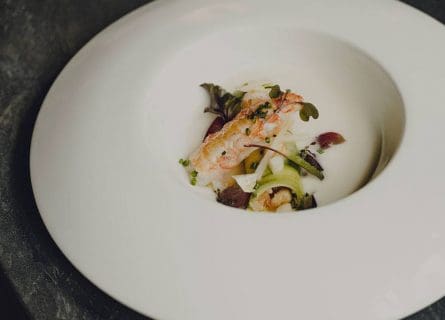
Gastronomic Restaurant in Hotel Santa Maria (see below) Gastronomy & Wine
Rioja has a long culinary tradition and is celebrated for its seasonal, country fare, including fresh fruit and produce from local market gardens, succulent lamb and game from the region’s farms, and, of course, fresh seafood and fish from the Atlantic, supplemented by trout and other fresh-water fish from local rivers. Add a surfeit of delicious local wines into this mix, and you have the recipe for a memorable feast.
Classic Riojan dishes include Lechazo Asado, roasted young, milk-fed lamb; Chuletas, lamb chops grilled over vine shoot embers. Bacalao a la Riojan is delicious salted cod with red peppers, and Patatas a la Riojana, a delightful stew of potato, chorizo (spicy paprika sausage), garlic, onion, and peppers. Game and foul are also very popular in winter, with quail being a particular highlight. Cooking tends to be traditional, and few chefs mess with the tried and tested formula. However, more avant-garde and experimental cuisine can be found in the region. Try the Marques de Riscal winery restaurant for a modern-day interpretation of classic Riojan food. In Briones, we recommend Los Calaos, a fantastic little local eatery with traditional food and a neat underground cellar.
Wine aficionados are in for a treat, for Rioja produces some of Spain’s best and most varied wines; the choice of styles and price levels is staggering. One of the joys of drinking Rioja today is the diversity of the old and new styles produced across the region; you can sample delicious, light, American oak-aged reds from classic blends or drink potent, concentrated 100% Tempranillo reds aged in new French oak. Unfortunately, a major misconception is that Rioja equals red, as many elegant whites and rosés are made in traditional and modern styles. Instead, the main red grape is Tempranillo, which produces cherry and strawberry-scented reds of excellent aging potential.
Guide to Riojan Gastronomy: Read more
Nearby Wine regions
-
 Explore the best of Rioja wine regions with our expert guide. Discover this iconic Spanish wine region's history, terroir, and top wineries. Plan your trip today! Read more
Explore the best of Rioja wine regions with our expert guide. Discover this iconic Spanish wine region's history, terroir, and top wineries. Plan your trip today! Read more
Highlights
-
Restaurant in Hotel Santa Maria
Nestled in the heart of Briones, Hotel Santa Maria’s restaurant is a true culinary gem. Housed in a beautifully restored historic building, the restaurant offers a warm and inviting atmosphere that reflects the region’s rich cultural heritage. But it’s the food that steals the show here, with a menu that celebrates the flavors and traditions of Rioja cuisine with a contemporary twist. Using only the freshest locally sourced ingredients, the talented chefs create dishes as beautiful as they are delicious. So whether you’re a wine lover exploring the famous Rioja vineyards or simply seeking an unforgettable dining experience, Santa Maria Restaurant is a must-visit destination that promises to delight your senses and nourish your soul.
-
Museo de la cultura del vino en Briones
This extensive wine museum is located just outside the town and is a fantastic addition to the Riojan cultural scene. The museum and wine production area are vast, very Falcon Crest, stretching over 9,000 square meters; they contain five permanent exhibitions, in addition to temporary exhibitions and, of course, a tasting room! What better way to get acquainted with the history and wines of this region, at the end of your tour, you will be able to taste a range of their Riojan wines.
Recommended for you
More information
If you would like us to customize an exclusive luxury tour, contact us and let us know your travel plans. We offer luxury food and wine tours for private groups of a mininium two guests. In addition, all of our private, chauffeured tours are available year-round upon request.

